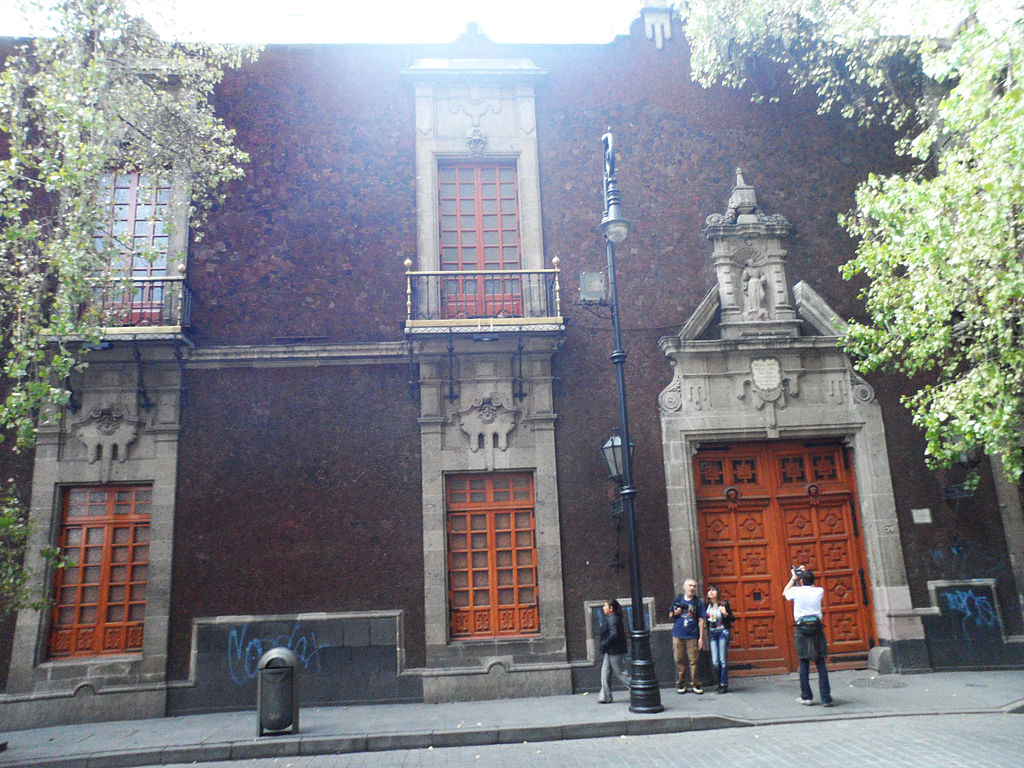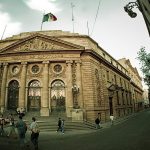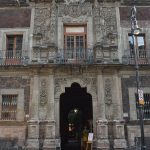
The Hospital del Divino Salvador was a mental hospital for women on Calle de Donceles for hundreds of years. Today, it’s merely one of the most striking buildings on an already deeply historical street.
Finished by the Jesuits in 1700, the building operated as a hospital until 1767 when the Jesuits were expelled from New Spain. Today, it’s home to the Federal Secretary of Health archives. It still maintains the original hospital archives.
The first hospital of its kind Mexico, it was founded in 1687. Named for the Congregation that originally sponsored the hospital, it had begun informally in the years before. At the time, this stretch of Donceles had been called Calle de Canoa. The initial patients were moved inside in 1700.
It operated under Jesuits until 1767 when the hospital was taken over by a Royal Board of Trustees. But the excellent care managed by the Jesuits was not to continue. By the early 19th century, Viceroy Félix Berenguer de Marquina began expanding the site and his renovations were completed in 1809. The site was to remain dependent on charity through the first half of the 19th century.
The Hospital del Divino Salvador came under the control of the Mexico City Council only in 1847. The city soon placed it under the control of the Sisters of Charity.
Always subject to scarce resources, the hospital fell into further disrepair despite piecemeal repairs and remodelings. In 1910, the remaining patients were moved to the new General Hospital called La Castañeda. This new hospital was built and manged under the Porfirio Díaz administration. The Hospital del Divino Salvador fell into further neglect, as it served as the headquarters of the Second Cavalry Regiment during nearly the entirety of the Mexican Revolution. President Venustiano Carranza afterwards even called for its demolition. Today only 20% of the original building is intact.
After the war, it was slowly reoccupied. In 1927 it was re-opened as the office of public charity, a forerunner to the Secretary of Health. That was to be created in 1938.
Today the Centro de Documentación Institucional is an important archive of the Secretary which also maintains the original hospital archives. In 1932, the remainder of the property was declared a national historical monument. In 1945, the remainder of the Secretary of Health archive was also moved into the property.
 55 5062 1600
55 5062 1600
 http://www.cdi.salud.gob.mx:8080/BasesCDI/
http://www.cdi.salud.gob.mx:8080/BasesCDI/

Nearest at 0.05 kms.

Nearest at 0.07 kms.

Nearest at 0.10 kms.



A modern graphic collection in an outstanding Baroque palace from the 18th century.

Mexico's National College is dedicated to the free sharing of knowledge and learning.

Quite likely the most important theater and performance space in all of Mexico City, of course it's the Esperanza Iris.

One of Mexico City's oldest continually running theaters, the Fru Fru has a reputation, and a legendary status.

A Donceles palace is home to Mexico City's Legislative Assembly, a storied Neoclassical complex.